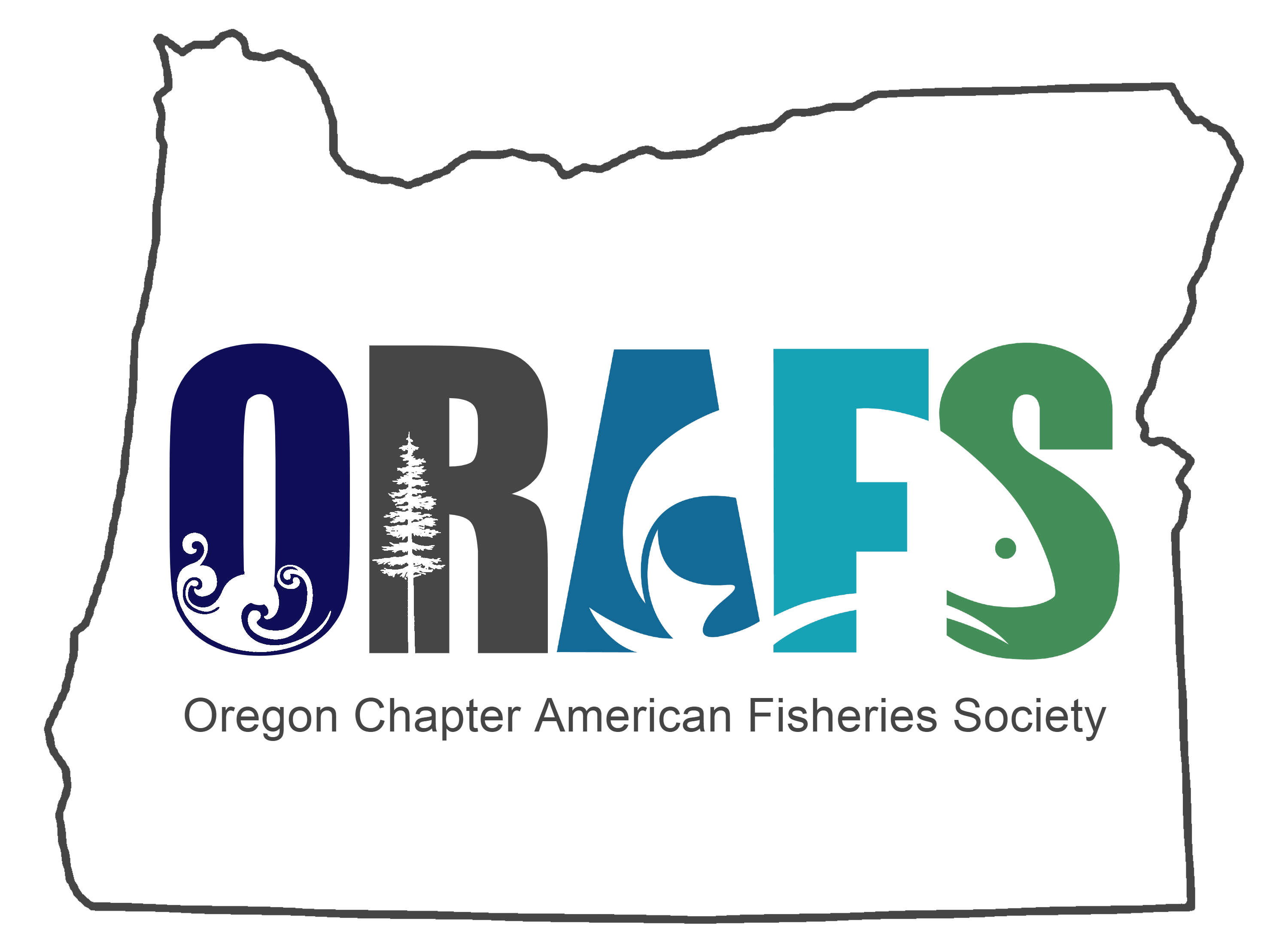Oregon Chapter American Fisheries Society
Strategic Plan 2020-2025
The mission of the Oregon Chapter of the American Fisheries Society is to: Improve the conservation and sustainability of Oregon fishery resources and their aquatic ecosystems for long‐term public benefit by advancing science, education, and public discourse concerning fisheries and aquatic science and by promoting the development of fisheries professionals.
In order to serve our membership and operate in a productive manner, this six‐year strategic plan provides overarching goals consistent with the Chapter’s mission and provides guidance for the development of annual chapter work plans.
The Chapter’s Vision for the 2020-2025 is to:
- Promote an inclusive and equitable professional environment to create and maintain a diverse membership (Objectives 1, 3, 4, 5, and 6).
- Continue to use innovative approaches to increase access to the ORAFS Annual Meeting, workshops, funding opportunities, and fisheries science and management information (Objectives 1, 2, 4, 5, and 6).
- Enhance effective capacity and governance of ORAFS (Objectives 7 and 8).
This vision provides the operational pillars or benchmarks for advancing the Chapter’s mission, objectives, annual workplans, and fiscal year budgets through 2025.
Objective 1. Develop programs that advance understanding of fishery science and responsible stewardship of fishery resources.
Strategy 1.1. Host high‐quality annual meetings.
Strategy 1.2. Host/sponsor professional development workshops as part of annual meetings and as stand‐alone events.
Strategy 1.3. Sponsor and support other groups and organizations workshops, events, trainings that advance the mission of the Oregon Chapter.
Strategy 1.4. Connect members with opportunities to participate in regional and national fishery events and activities through our newsletter, website, and social media platforms.
Strategy 1.5. Actively consider hosting Society and Western Division AFS meetings.
Strategy 1.6. Connect members with opportunities to publish and present scientific findings in appropriate forums through our newsletter, website, and social media platforms.
Objective 2. Advocate policies and laws that benefit the conservation and sustainability of Oregon fishery resources and their aquatic ecosystems.
Strategy 2.1. Maintain a presence in the Oregon legislative process and subsequent development of administrative rules by contracting a legislative liaison and keeping an active legislative external committee.
Strategy 2.2. Maintain awareness of and ability to respond to policies developed for use by fishery managers at local, state, and federal levels. Coordinate with chapter external committees and/or membership to respond orally or in writing when appropriate.
Strategy 2.3. Inform members through our newsletter, website, list serve, and social media platforms regarding opportunities to make personal contact with their local decision makers and volunteer their expertise.
Objective 3. Increase public awareness, understanding, and appreciation of fishery resources amongst chapter members and the general public.
Strategy 3.1. Ensure that resources are available to assist and promote fishery and aquatic education in schools and maintain and update education materials as needed.
Strategy 3.2. Maintain a user‐friendly web page and an active presence amongst appropriate social media platforms consistent with the chapter’s social media policy.
Strategy 3.3. Develop Chapter Communication Strategy and Plan.
Objective 4. Promote development of fishery and aquatic science students.
Strategy 4.1. Provide competitive scholarships to student candidates.
Strategy 4.2. Through outreach, encourage participation of Oregon college and university students in annual meetings by offering cost‐effective attendance options as well as events that facilitate interactions between students and fisheries professionals.
Strategy 4.3. Encourage and promote active participation in Oregon Chapter student subunits by students from diverse backgrounds.
Strategy 4.4. Provide experience and educational support to student subunits to encourage their active participation and interaction with Chapter professionals.
- Establish mentorship program for students, early career professionals, and Chapter members.
Strategy 4.5. Maintain a portion of the web page that advertises career opportunities for students and early career professionals.
Objective 5. Support and encourage development of professional members.
Strategy 5.1. Host a high-quality annual meeting with networking, training, and information sharing opportunities.
Strategy 5.2. Maintain a portion of the web page that supports professionals through information exchange and career opportunities.
Strategy 5.3. Promote and support member participation in the AFS professional certification program.
Strategy 5.4. Provide financial support (e.g., fish‐out‐of‐water waivers) or other mechanisms to reduce barriers (financial, transportation, etc.) and increase access for early professionals and members to attend ORAFS annual meetings and programs.
Strategy 5.5. Advertise and promote nominations for chapter awards for deserving professionals, including non-traditional members of the fisheries and aquatic communities.
Objective 6. Promote an inclusive fisheries professional environment to create and maintain diverse membership.
Strategy 6.1. Maintain an informative newsletter with quarterly features highlighting inclusion in fisheries.
Strategy 6.2. Promote membership to fishery and aquatic scientists from a variety of professional disciplines of the profession.
Strategy 6.3. Encourage participation of under-represented groups and increase outreach, recruitment, and retention of a membership reflective of the human diversity of Oregon.
Strategy 6.3.1 Engage a DEI Consultant to assess needs for creating a more inclusive, equitable and diverse chapter, and create an action plan.
- Execute action plan as developed by DEI consultant, Executive Committee, and membership.
- Report annually as part of Business Meeting on action plan progress.
Strategy 6.3.2. Initiate capital campaign to supplement Lassuy Endowment and create a permanent fund for the promotion of inclusion, equity, and diversity (nexus with Objective 7 strategies).
Objective 7. Maintain financial responsibility and investments.
Strategy 7.1. Plan annual budgets in accordance with the Financial Sustainability Plan and Investment Policy (FSPIP).
Strategy 7.2. Administer chapter finances to maintain annual budget solvency and long‐term chapter financial sustainability in accordance with the FSPIP.
Strategy 7.3 Identify prudent options for utilizing annual disbursement funds consistent with the FSPIP.
Objective 8. Regularly assess Chapter and Executive Committee operational structure to optimize chapter productivity and efficiency.
Strategy 8.1. Annually review and update the Internal and External Committee structure (e.g., expand or consolidate) and Oregon Chapter AFS Administrative Handbook, as needed.
Strategy 8.2. Update by‐laws when appropriate and needed to meet chapter objectives.
